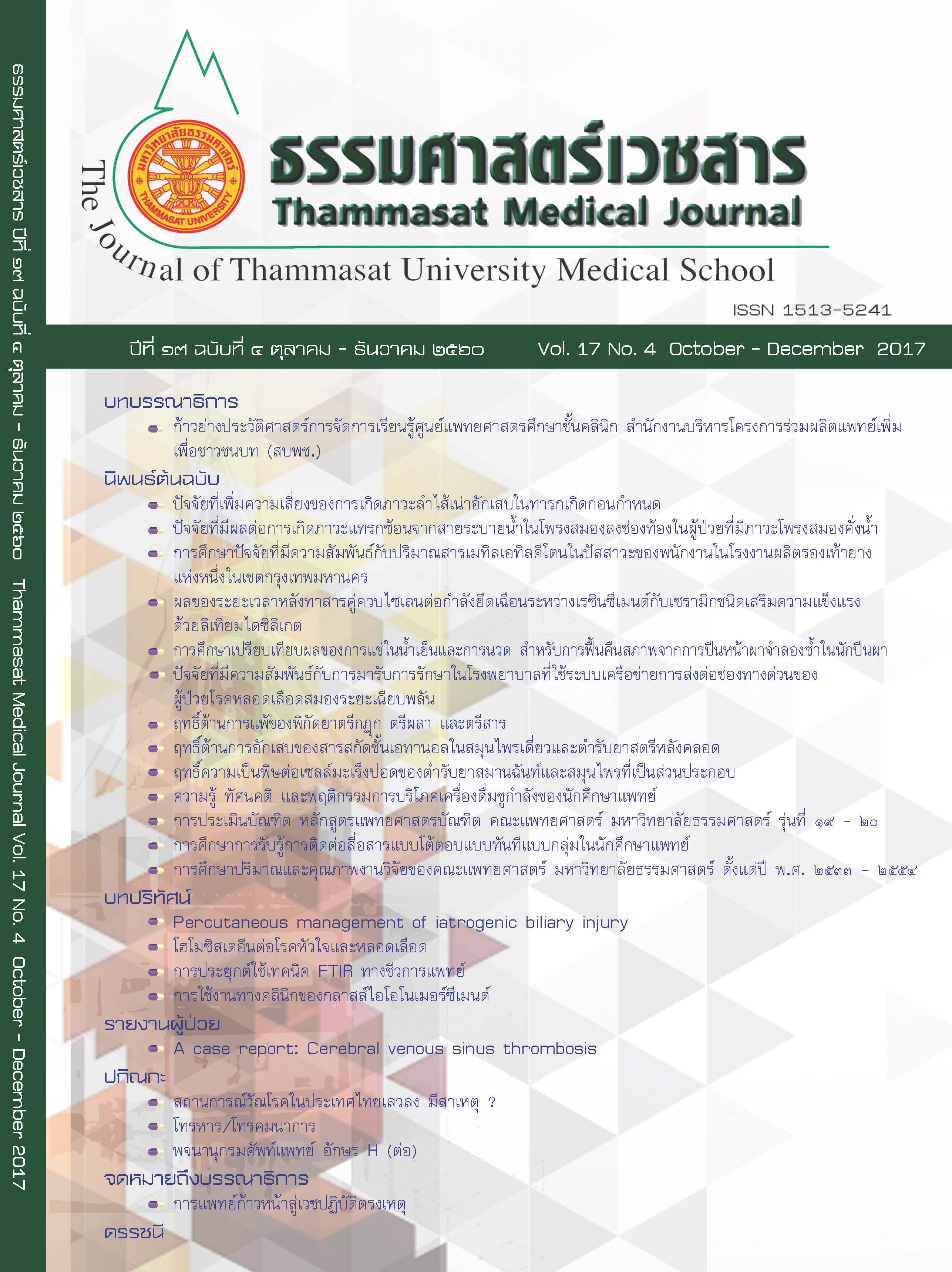Applications of FTIR technique in Biomedical Sciences
Keywords:
Infrared Spectroscopy, Biomedical sciences, Microbiology, Stem cells, Cancer, อินฟราเรดสเปกโทรสโคปี, ชีวการแพทย์, จุลชีววิทยา, เซลล์ต้นกำเนิด, มะเร็งAbstract
The vibrational modes in biological samples give rise to the IR spectrums which represent a fingerprint of samples that correspond to the frequencies of vibrations between the bonds of the atoms composition in the biological molecules. Fourier Transform–Infrared (FTIR) Spectroscopy was developed to improve for rapid scanning, sensitivity and more powerful by using interferometer. The interference patterns of two IR beams generate interferogram which finally transformed into a spectrum by the Fourier transform algorithm. Due to the FTIR technique provides spectral fingerprints of the complex biological structures resulting in a positive identification of every different kind of biological samples. This method has been introduced into various biological fields and found to be a very useful tool. Therefore, this review article aimed to emphasize the application of FTIR spectroscopy in biomedical research such as in microbiology, stem cells and cancer.
บทคัดย่อ
เทคนิค Infrared (IR) Spectroscopy เป็นเทคนิคที่ใช้หลักการวิเคราะห์การสั่นของโมเลกุลของสารจากการได้รับพลังงานแสงอินฟราเรด ซึ่งคลื่นความถี่ที่จำเพาะของโมเลกุลหนึ่ง ๆ ทำให้เกิดพีค (peak) ที่ตำแหน่งเลขคลื่น (wave number) ทำให้ได้ลายพิมพ์อินฟราเรดสเปกตรัมตามพันธะในโมกุลของสารนั้น ๆ ในการพัฒนาเทคนิคเพื่อให้สามารถทำงานได้รวดเร็วขึ้น มีความสามารถในการแยกสูง และสภาพไวสูง สามารถวิเคราะห์สารตัวอย่างที่มีในปริมาณน้อย ๆ ได้ เทคนิค Fourier Transform–Infrared (FTIR) Spectroscopy จึงถูกพัฒนาขึ้น โดยคลื่นแสง IR จะถูกทำให้แทรกสอดกลายเป็นคลื่นเดี่ยวที่มีหลายความยาวคลื่น เรียกว่า Interferogram ซึ่งสามารถแปลงให้อยู่ในรูปแบบของสเปกตรัมได้โดยสมการ Fourier Transform จากหลักการของ FTIR ที่สามารถวิเคราะห์แยกโมเลกุลของสารได้อย่างจำเพาะ ดังนั้น การนำเทคนิคดังกล่าวมาประยุกต์ใช้งานทางชีวการแพทย์จึงเป็นประเด็นที่น่าสนใจยิ่ง เพื่อแสดงให้เห็นถึงประโยชน์ของเครื่องมือวิทยาศาสตร์ประเภทนี้ คณะผู้เขียนจึงรวบรวมข้อมูลงานวิจัยต่าง ๆ ที่เกี่ยวข้องกับการใช้เทคนิค FTIR โดยมุ่งเน้นนำเสนอ การใช้เทคนิค FTIR ในงานทางด้านจุลชีววิทยา การศึกษาเซลล์ต้นกำเนิด (stem cells) และการศึกษามะเร็ง เพื่อให้เกิดความรู้และความเข้าใจ รวมถึงความเป็นไปได้ในการพัฒนาเทคนิค FTIR สู่การประยุกต์ใช้ในทางการแพทย์ที่เหมาะสม


